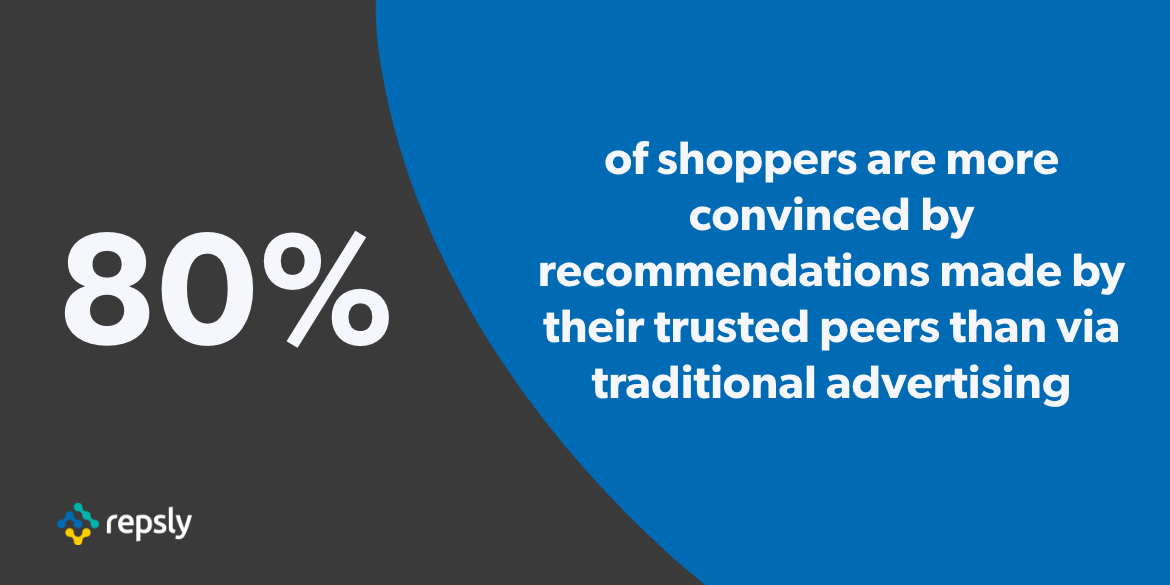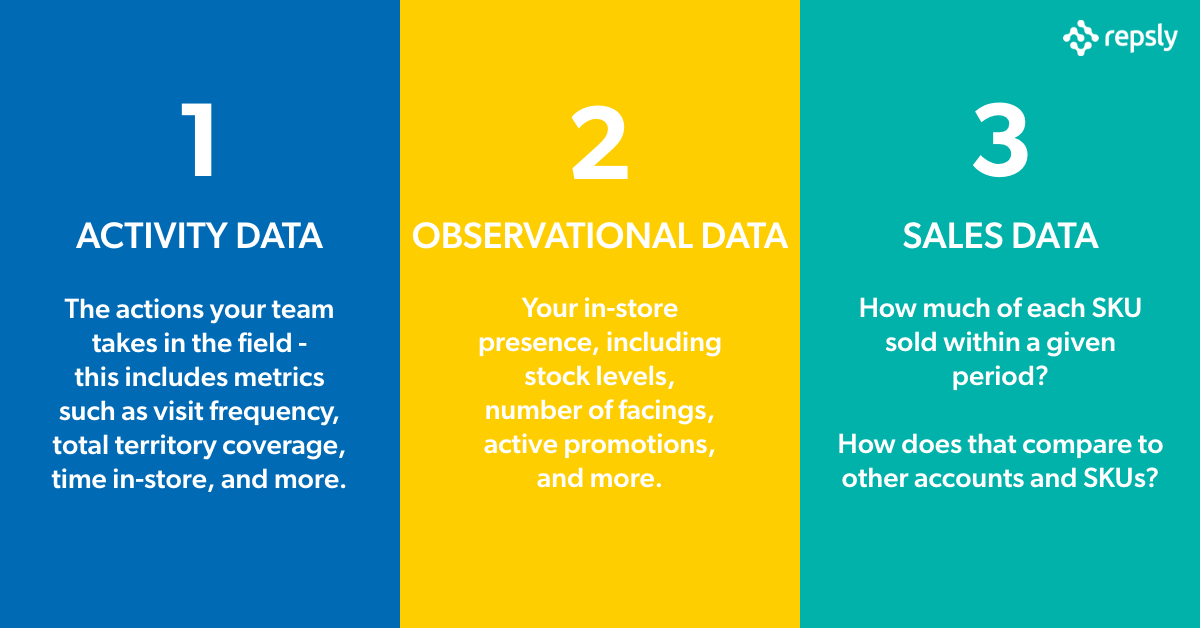Brand ambassadors are an excellent way for CPG companies to expand awareness and reach a wider target audience. In its most basic form, the main role of brand ambassadors is to represent, promote, and engage your brand and its product within their local communities and networks.
But why choose this form of marketing over traditional advertising? Because it’s been shown that 80 percent of shoppers are more convinced by the recommendations made by their trusted peers than via traditional advertising.
You’ve likely encountered a few brand ambassadors before! They come in many different forms, but the most commonly used tactics for successful ambassador programs comes through a multi-effort approach of experiential and street events, guerilla marketing, student ambassadors, and niche authorities. An outstanding brand ambassador program you’ve certainly seen before is the Red Bull Wings Team.
And with the growing popularity and influence of the internet on millennials and younger consumers, it’s a given that every ambassador is also a social media influencer engaging with their networks to further promote and spread awareness to build brand affinity.
It’s also an important distinction to understand that not all social media influencers are brand ambassadors, but most brand ambassadors are also using their social channels to promote the brand they represent.
Who Are Your Brand Ambassadors?
Your brand ambassadors are your best customers! They’re your ride-or-die fans. They’re the first to buy and share your new products with their friends and the first to click “Like” on your social posts. Not only do they adore your brand, but they understand it and live by what it stands for. They just “get” you.
The first big step to growing your brand with the right audience is finding the right people to fill your newly created ambassador roles! You need to have a dedicated team of highly energetic and motivated people that have a deep understanding and affinity with your product. If any ambassador fails to meet those standards, they may not be the right fit for representing your product. Remember, people assign meaning to the brands they like, and brand ambassadors help create that meaning.
In some cases, large companies will even hire celebrities to represent their brand as ambassadors. When this occurs, that brand typically pays a macro-influencer to be the leader of the pack who can then better influence the other ambassadors to gain a larger ROI. For example, let's take a look below at this Instagram post from Stephen Curry, world-famous basketball player and water connoisseur. Who better to represent a hydration product than a professional athlete as well recognized as Chef Curry.
Max Baumann, CEO of Basemakers, a retail merchandiser based out of Austin, Texas, further explained how this works. “Right now, since the budgets have changed and there’s no more in-store sampling due to COVID-19,” said Baumann. “So where do you allocate those funds to drive a big return?”
Max explained that you should reallocate your field marketing and in-store budgets toward shipping costs, and should leverage the social media presence of your macro-influencer to influence your micro-influencers. This strategy is fantastic for bridging the digital online connection to the physical in-store connection. By increasing response rates and social posts, your brand will gain more foot traffic in stores driven by those micro-influencers, who he says are actually more impactful for driving home brand credibility.
How to Start a Program
But before you jump into getting celebrities as part of your brand, let’s start with the basics. For many brands, starting an ambassador program seems like a no-brainer. It’s likely you’ve already been reached out to by some loyal customers looking to rep your brand, and that’s a fantastic start! Most programs typically begin that way and evolve over time.
A brand ambassador (BA) program could start with something as simple as a promo code or discount that’s supplied by each individual ambassador. As their discount or promo codes continue to drive sales, the more each ambassador earns. This is a popular model to follow as it doesn’t set you back any initial costs. For many programs starting out, the goal of your campaign could be even simpler – focusing exclusively on building up awareness and impressions.
Whatever the intended outcome is, it’s important that you’re tracking and measuring the success of each ambassador to better understand more about your target market. For a small program with low financial investment–with only a handful of ambassadors–sending texts or emails and keeping data in an Excel or Google Sheet may work just fine for the time being, but may become a bit chaotic as the team continues to grow.
Adding Structure to the Program and Team
Another key piece to the early success of any brand ambassador program is having a solid structure in place that’s easy for each ambassador to follow. While it’s important to remember that these brand ambassadors are likely not employees of the company, and should be viewed as independent of the company, there are certainly a number of tools you can equip your team with to help steer their own ship and form a genuine relationship with their community.
Set your ambassadors up with brand guidelines, as well as a way to communicate directly with each other, such as a forum or a team management app, so they can share news, best practices, and other relevant brand information with each other easily. When you relinquish your control over the program, it asserts the fact that brand ambassadors are not just another corporate appendage; They are a valued, independent group of community tastemakers that other consumers know and trust.
How to Achieve at Scale
Now that you’ve created a BA program for your product, you may be wondering how you can scale that program up to the likes of Adobe and Red Bull. While it may be easy to track and follow the successes and efforts of a handful of brand ambassadors through Excel or Google Sheets, as brands and their ambassador programs begin to scale in size and territory, the nature of the campaigns tends to increase in size and costs too and typically require a better system that can combine and process complex information.
Red Bull has build a world-renowned ambassador program build on energetic and highly-motivated consumers, and the infamous Red Bull “Wings Team” Mini Cooper.
When BA programs grow, those companies typically begin supplying free products or samples, as well as other marketing materials to their ambassadors to help grow the brand’s identity. Let’s take, for example, a seltzer brand wants to promote a new flavor across the Northeast and they have brand ambassadors appearing at events in every state. They’ll want to know what locations are running the promotions so that their brand ambassadors can send the seltzers there to promote, and then afterward, they’ll want to see the results.
The biggest challenge this seltzer brand and many brands alike face as they begin to scale their ambassador programs up is the ability to manage and maximize the impact of every ambassador. When you’re only managing a few ambassadors in the same region, it’s easier to follow the impact each one makes as they work independently. But when you have hundreds or even thousands of ambassadors, upgraded to a system that can manage them all is crucial to the success of the program.
With such a big investment made in their BA program, it’s important that the seltzer brand is equipped with a system that can combine data points from various ambassadors in one source so that they can find data-driven insights to maximize their BA program strategy.
Tracking Key Data Points
Scaling a brand ambassador program is a massive opportunity for CPG brands, but it takes committed investment and effort to reap the benefits. One integral piece to the success of every brand strategy is having structured and reliable data.
When building a field team of brand ambassadors, it’s critical to have the ability to track what’s happening in real-time in order to understand the true value and ROI of each ambassador.
Collecting data at scale, aggregating it easily, reporting on it, and drawing insights from that data is how top brands quickly and consistently iterate across large territories and expand their brand presence. The top CPG sales and marketing teams are putting data at the forefront of their retail execution efforts, unlocking the insight they need to prioritize and maximize high-opportunity initiatives.
The most effective CPG field teams are building their retail execution strategies around three key types of data:
1. Activity Data: The actions your ambassadors take in the field - this could include a few metrics such as event frequency, total territory coverage, total time in-store running events, total shopper interactions, or it could just focus on the single most important KPI to your BA program.
-
- For example: Your focus is on SKU trials initiated. By seeing how many SKU trials were initiated by each individual ambassador at their event locations, you have a better understanding of why your product may or may not have performed well at a specific location, and which ambassadors are your shining stars.
2. Observational Data: Your in-store presence, including stock levels, number of facings, active promotions, and more.
-
- For example: A seltzer company just ran a promotional campaign on a new flavor with its brand ambassadors. However, only half the reps replenished the stock levels of that flavor before the campaign. In half the stores, the product sold out prior to the brand ambassador completing the event. If the seltzer brand had data from your field team in prior visits, they would've already known which locations needed an order replenishment before the promotional event began.
3. Sales Data: How much of each SKU sold within a given period? How does that compare to other accounts and SKUs?
-
- For example: You ran the event with your brand ambassadors. Now it’s time to see the fruits of your labor. By looking at the historical sales data, you’ll be able to determine the sales lift of your event – or if there’s no apparent change in sales trend, you could also determine that an event may not have been set up and executed properly, or at all. By examining the sales lift of every ambassador in locations where they were present, you’ll have a full scope to justify new placements and future event locations. Additionally, you can measure uplift generated by each ambassador by comparing the sales to locations they weren’t present.
Together, these three types of data give CPG sales and marketing organizations a complete picture of how their products are presented, sold, and supported in all of their accounts, shining a light on how and when brands can deploy their field teams to have the biggest impact in the store.
Many of the fastest-growing consumer brands in the world are leveraging the insights they gain from activity, observational, and sales data to gain huge competitive advantages over other brands in their space. While all of these tactics may appear simple on paper - the ability to scale up each of them up is what separates the truly successful brands from the average.
But larger brands, however, will almost always require the use of a platform built specifically for collecting this data. In the long run, this saves them time on data collection, organization, and reporting.
Keeping data organized is an extremely undervalued part of most companies scaling efforts. Without an easy way to aggregate and reference large amounts of data, managers and their field teams quickly lose focus on what’s working and what’s not. A system that can filter and tag ambassadors, accounts, stores, event locations, and products will help keep large brands organized at scale.
Explore the 3 Types of Data to Explode Sales to learn five ways high-performing retail brands are leveraging structured and reliable data to have the biggest impact in the store.







